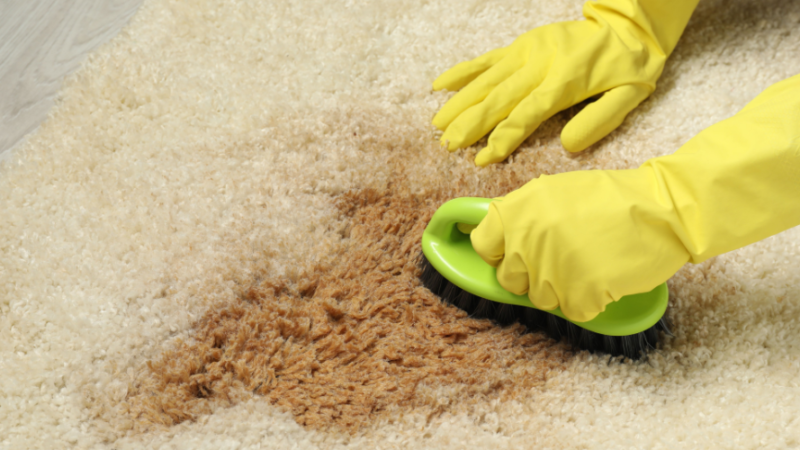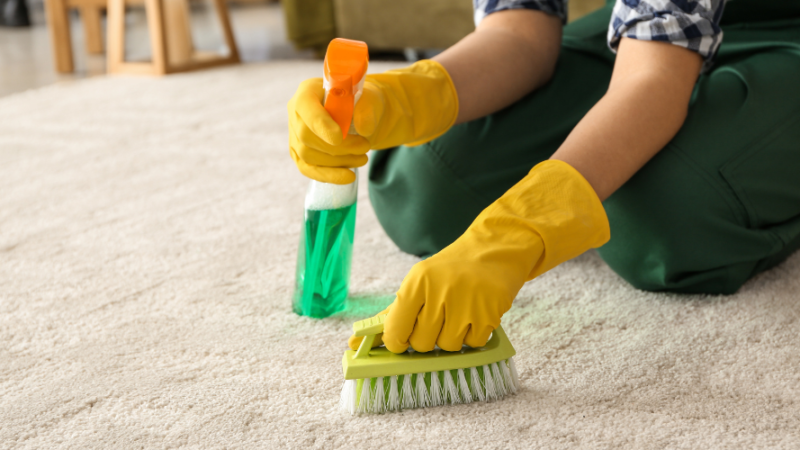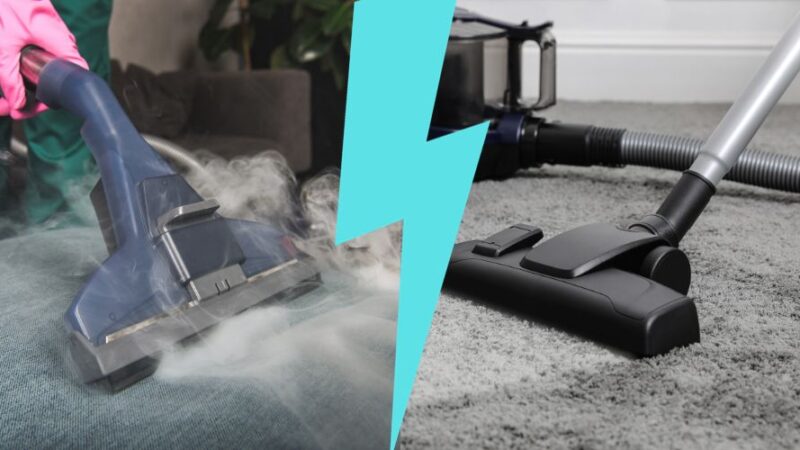How to Get Rid of Carpet Beetles Permanently

Struggling with Carpet Beetles? Here’s How to Get Rid of Them for Good!
Carpet beetles may be tiny, but their impact on your home can be massive. These sneaky pests feed on natural fibers like wool, silk, and even pet hair, causing irreversible damage to carpets, clothing, and upholstery.
If you’ve noticed mysterious holes in your fabrics or tiny larvae hiding in dark corners, you might have a carpet beetle infestation. The good news? You can take control before the problem worsens!
In this guide, we’ll walk you through effective and permanent solutions to eliminate carpet beetles from your home.
From deep cleaning strategies to natural repellents and preventative measures, you’ll learn everything you need to keep these pests away for good. Say goodbye to fabric damage and hello to a beetle-free home!
Signs of a Carpet Beetle Infestation
Before you can eliminate carpet beetles, you need to confirm their presence. Common signs include:
- Irregular holes in clothing, upholstery, and carpets
- Shed larval skins around infested areas
- Tiny beetles or larvae in dark, undisturbed spaces
- Small fecal pellets near affected materials

Step-by-Step Guide to Eliminating Carpet Beetles
1. Deep Clean Your Home
The first and most crucial step is thorough cleaning. Carpet beetles thrive in dust, lint, and debris. To remove them:
- Vacuum regularly – Focus on carpets, furniture, closets, and baseboards.
- Steam clean carpets and upholstery – Heat kills both larvae and eggs.
- Wash infested clothing and fabrics – Use hot water and detergent.
- Dispose of heavily infested items – If some materials are beyond saving, discard them properly.
Want to know Why Does My Carpet Smell After Cleaning?
2. Use Natural Carpet Beetle Repellents
Instead of relying on harsh chemicals, try these natural remedies:
- Diatomaceous earth (DE) – Sprinkle DE in affected areas; it dehydrates and kills larvae.
- Vinegar solution – Wipe down shelves, drawers, and furniture with a mixture of white vinegar and water.
- Cedarwood oil – This essential oil repels carpet beetles and prevents reinfestation.
3. Apply Insecticides for Severe Infestations
If natural methods don’t eliminate the infestation, use an appropriate insecticide:
- Look for insecticides with bifenthrin, deltamethrin, or cyfluthrin.
- Apply it to cracks, crevices, and entry points where carpet beetles hide.
- Always follow safety precautions when using chemical treatments.
4. Remove and Protect Natural Fibers
- Store wool, silk, and other natural fibers in airtight containers.
- Regularly inspect and clean stored clothing and bedding.
- Use mothballs or lavender sachets to deter carpet beetles.
5. Seal Entry Points to Prevent Reinfestation
Carpet beetles enter homes through doors, windows, and vents. To prevent them:
- Seal cracks and crevices around windows and baseboards.
- Install screens on vents and chimneys.
- Keep your home free of debris and food crumbs.
Must check Common Carpet Cleaning Mistakes to Avoid
How to Prevent Future Carpet Beetle Infestations
Carpet beetles can return if preventive measures are not taken. While eliminating an infestation is crucial, it is equally important to make sure they don’t come back. Below are the best practices to prevent future carpet beetle infestations and keep your home pest-free.
1. Regularly Vacuum and Dust Your Home
One of the simplest and most effective ways to keep carpet beetles away is by maintaining a clean home.
✅ Vacuum carpets, rugs, and upholstery at least twice a week to remove food particles, pet hair, and fabric debris that attract carpet beetles.
✅ Dust surfaces, baseboards, and corners regularly to eliminate beetle eggs and larvae hiding in undisturbed areas.
✅ Use a HEPA-filter vacuum to ensure you are capturing tiny beetle larvae, eggs, and any remaining debris effectively.
✅ Steam clean carpets and furniture occasionally, as high heat kills any hidden larvae or eggs.
By keeping your home free of dust and organic matter, you remove the primary food source of carpet beetles and discourage them from settling in.
2. Inspect Second-Hand Furniture or Clothing Before Bringing Them Indoors
Carpet beetles often enter homes through second-hand items like furniture, rugs, and clothing. Before bringing in anything pre-owned, take the following precautions:
✅ Thoroughly inspect items for any signs of carpet beetles, such as shed skins, holes, or larvae.
✅ Vacuum and clean second-hand furniture before placing it in your home.
✅ Wash second-hand clothes in hot water before wearing or storing them.
✅ Freeze infested fabrics for 48 hours, as extreme cold kills beetles and larvae.
Being careful with second-hand purchases ensures that you don’t accidentally introduce carpet beetles into your home.
3. Use Pest-Repelling Essential Oils Like Eucalyptus and Peppermint
Natural remedies like essential oils can act as effective deterrents to carpet beetles without the use of harmful chemicals.
✅ Spray a mixture of water and essential oils (like eucalyptus, peppermint, or lavender) around carpets, furniture, closets, and storage areas.
✅ Use sachets of dried herbs (such as lavender, rosemary, or cedarwood) in wardrobes and drawers to repel pests.
✅ Add a few drops of essential oil to your cleaning water when wiping down surfaces.
These natural scents disrupt the beetles’ sensory receptors, making your home an unattractive place for them to nest and lay eggs.
4. Keep Your Home Well-Ventilated and Dry
Carpet beetles thrive in dark, damp, and undisturbed environments. Keeping your home dry and well-aired makes it less inviting for these pests.
✅ Use a dehumidifier to reduce excess moisture, especially in basements and storage areas.
✅ Allow sunlight to enter rooms by opening curtains and blinds—carpet beetles prefer dark places.
✅ Regularly air out stored fabrics like wool blankets, rugs, and coats to prevent infestations.
✅ Fix any leaks to avoid damp conditions that can attract pests.
Conclusion
Carpet beetles can be a persistent nuisance, but with a combination of deep cleaning, natural remedies, insecticides, and preventive measures, you can get rid of them permanently. By maintaining good hygiene and sealing entry points, you can keep your home free from these destructive pests for good.






